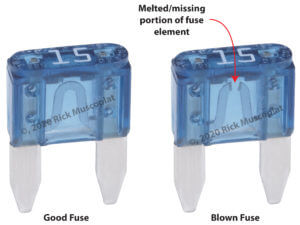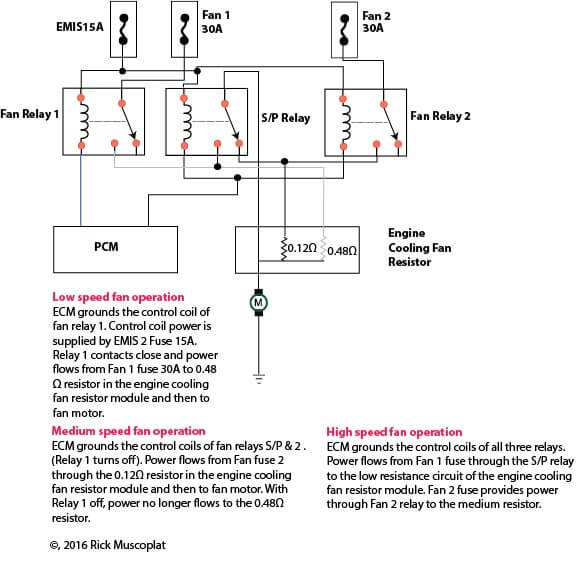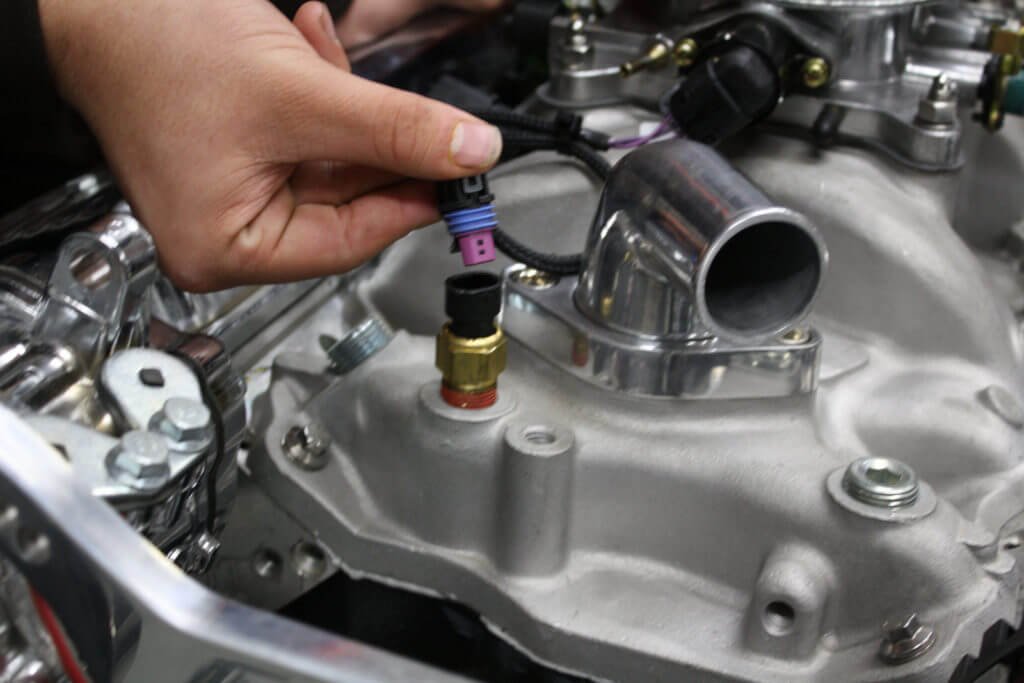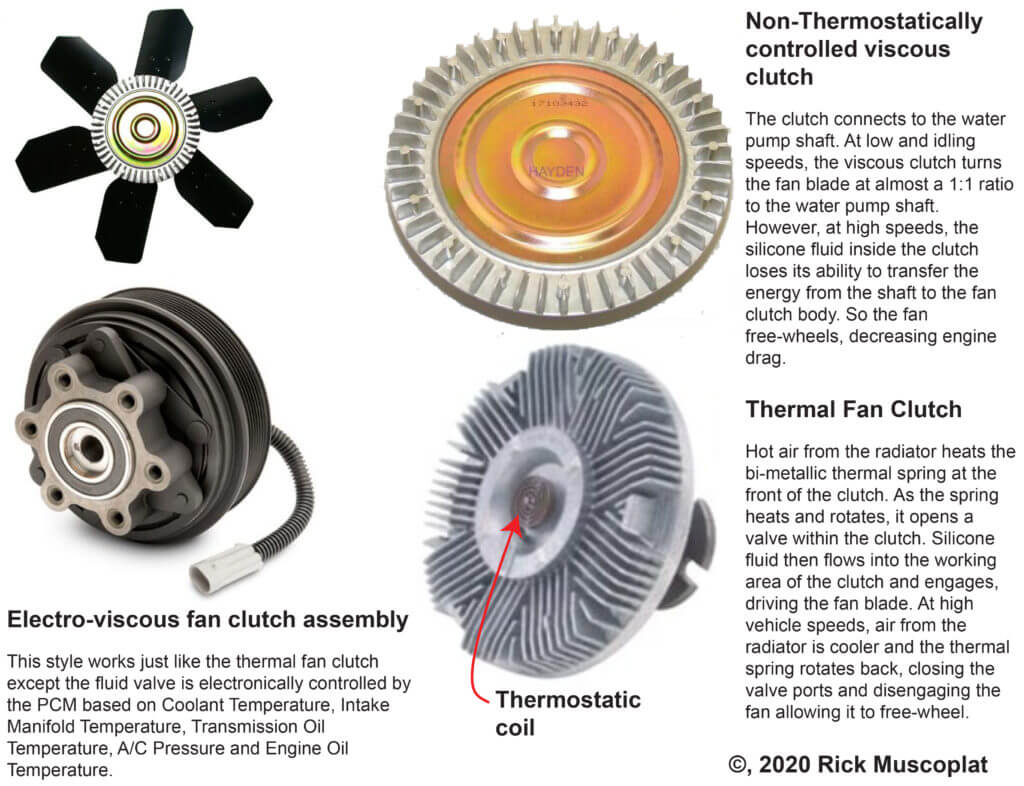Radiator fan not working: How to diagnose and fix
Learn how to diagnose a fix a radiator fan issue
If your engine is overheating and you find the radiator fan not working, there can be several reasons. Here are the five most common causes.
Blown fuse — electric radiator fans
Check the fuse(s) for the electric radiator fans. If one or more  fuses are blown and the replacement fuse blows as well, check each fan blade for debris blocking rotation. If none found, manually check for the ease of rotation. If the blade is hard to turn, the motor has most likely failed and is drawing too much power, which is why the fuse is blowing.
fuses are blown and the replacement fuse blows as well, check each fan blade for debris blocking rotation. If none found, manually check for the ease of rotation. If the blade is hard to turn, the motor has most likely failed and is drawing too much power, which is why the fuse is blowing.
An electric radiator fan should spin freely. If it doesn’t, chances are the bearings are worn and the fan must be replaced.
Faulty radiator fan relay(s)
Carmakers use many different relay configurations to achieve multiple radiator fan speeds. To make radiator fans run at low and high speeds, some carmakers use a series-wired set of three relays. Other carmakers use two relays, while some carmakers use a solid-state radiator fan relay that pulses power to achieve infinitely variable radiator fan speeds.
Check a shop manual to see what type of speed control system is used in your vehicle. Don’t assume that because the fan is running, it’s running at the correct speed for the engine temperature.

This is a typical GM 3-speed radiator fan wiring diagram
Radiator fan not working due to a faulty coolant temperature sensor or a problem with the coolant sensor wiring
The powertrain computer determines when to activate the

Engine coolant temperature sensor is usually located near the thermostat housing
radiator fan based on temperature readings from the engine coolant temperature sensor (ECT). The ECT is usually located near the thermostat housing. However, in some engines, it’s located in the cylinder head or radiator.
ECT sensors provide a variable resistance based on coolant temperature. Locate the resistance/temperature chart in a shop manual. Measure the engine temperature and compare it to the resistance reading from the CTS. Replace the CTS if the reading doesn’t match the shop manual.
Faulty clutch on belt-driven radiator fan
Carmakers often use a viscous clutch on a belt-driven fan. The clutch engages at low speeds to drive the fan along with engine RPMs. However, at higher speeds, where air coming through the radiator can cause a drag on the engine, the viscous clutch allows the fan to free-wheel, thus saving engine power.
The viscous clutch mechanism is filled with a silicone fluid that can be thermostatically controlled or electrically controlled. If the fluid leaks out, the thermostat fails or the electrical flow control device fails, the fan will free-wheel at low speeds, causing an overheat condition. The overheat may disappear when the vehicle is driven at highway speeds. This is because the “ram-air” effect of high speed causes enough air to pass through the radiator to cool the engine.

Three types of belt-driven radiator fan clutches
If you have a belt-driven fan and your engine overheats at idle but not at highway speeds, AND your coolant level is at the proper level, you may have a faulty radiator fan clutch.
©, 2020 Rick Muscoplat
Posted on by Rick Muscoplat